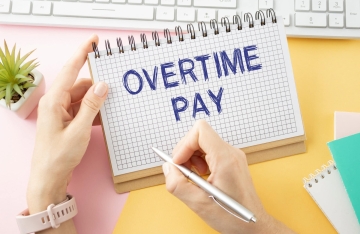Recent News & Blog / DOL raises overtime salary threshold

April 25, 2024
On April 23, 2024, the U.S. Department of Labor (DOL) announced a final rule that significantly increases the minimum salary threshold to qualify for certain overtime exemptions under the Fair Labor Standards Act (FLSA). In the first year, the DOL estimates that four million workers will be impacted by the final rule’s salary threshold increases.
The final rule increases the overtime salary threshold to qualify for the white-collar exemptions (executive, administrative, and professional) in two phases:
- Effective July 1, 2024, the salary threshold will increase from $35,568 per year ($684 per week) to $43,888 per year ($844 per week).
- Effective January 1, 2025, the salary threshold will increase to $58,656 per year ($1,128 per week).
In addition to raising the overtime salary threshold, the final rule makes the following key changes:
- Starting July 1, 2027, the salary threshold will update every three years by applying up-to-date wage data to determine new salary threshold levels.
- The salary threshold for the highly compensated employees (HCE exemption) will increase to $132,964 per year effective July 1, 2024 and to $151,164 per year effective January 1, 2025. Please note that some states do not recognize an HCE exemption under their regulations which means that employees must meet the salary and duties requirements of other available exemptions to be classified as exempt from overtime.
It is important to remember that the executive, professional, and administrative exemptions have more requirements than just the salary threshold when determining employee classifications. To qualify for these exemptions, employees must meet three criteria:
- Be paid at least the minimum salary threshold,
- Be paid on a salary basis, and
- Perform certain duties specific to the exemption.
Employers should take the time to review jobs classified as exempt for compliance with all three criteria, not just the minimum salary threshold.
For a brief summary, visit the DOL’s comprehensive chart of all earnings thresholds and effective dates. The DOL has also provided a FAQ on the final ruling.
Take Action
While legal challenges are expected, employers cannot count on the rule being stopped by a court and should prepare as if the final rule will take effect as planned.
If you would like assistance with classifying positions or if you have any questions on wage and hour laws, please contact Laura Stover, Director of HR Advisory Services.